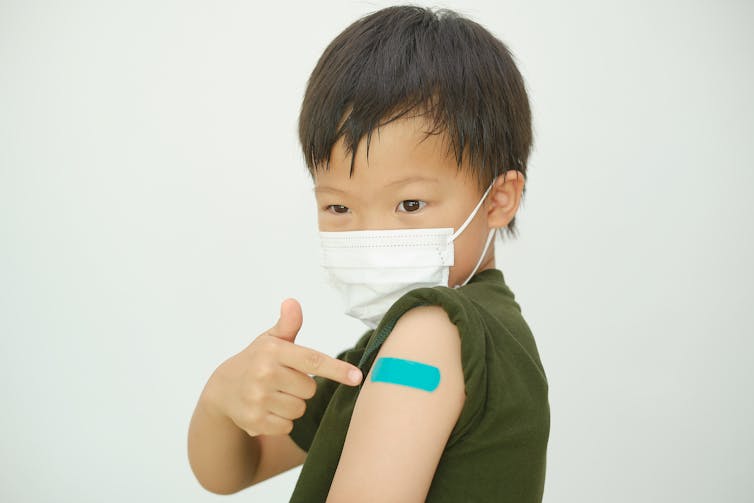, PhD Candidate in Clinical Psychology, .
Thousands of health research articles are published every year. With new evidence constantly being made available, you might assume health practices are also constantly evolving.
The reality is, however, of clinical research will ever make it into practice. Even when evidence is adopted into practice, this process can take .
The field of children’s health is not exempt from this slow uptake. Considering that 17 years is nearly the length of an entire childhood, the speed with which evidence is adopted into practice must increase.
As a PhD candidate in clinical psychology, my research is focused on implementation science and pediatric pain, and specifically seeks to understand how to best support the uptake of evidence to improve children’s health and well-being.
Research evidence that impacts practice must be three things:
- relevant to those who may benefit from it,
- tailored to the context where it will be used, and
- easy to adopt into practice.
How can these principles be addressed so evidence is better implemented? The group that holds the key to answering this question is young patients and their parents or caregivers.
Patient partnerships

Traditionally seen as just the recipients of health care, young patients and their parents or caregivers bring with them something that cannot be taught in graduate programs or medical school: lived experience.
Engaging people with lived experience means integrating the perspectives of people who have not only lived with a given health condition, but have navigated the health-care system for treatment. These perspectives can be integrated into research in several ways, from developing research questions to sharing evidence.
When researchers work with patients and parents or caregivers to guide research and share evidence (called “patient partnership”), for the quality of evidence, and how easily it can be integrated into clinical practice.
By contributing their lived experience, patients and parents or caregivers can increase the impact of evidence. How does experience impact how evidence is used in practice, however? Engaging patients and caregivers can improve the way evidence is shared with potential users. These include understanding context, tailoring resources and increasing the efficiency of information sharing.
Understanding context
Context is the setting or situation in which research evidence can be used.
Context is important for understanding what information is needed, how it will be used and who will use it. It also ensures that relevant evidence is shared to support identified needs in the clinical environment. Patients and caregivers who have engaged with services within the health-care system can point out details in the environment that should be considered based on their experiences.
Consider an example that most parents or caregivers are familiar with: managing children’s needle pain during a vaccination. Young patients and their caregivers can offer insight into important elements of the physical environment.
Aspects of the environment include things like having a chair so the parent can use , and an electrical outlet and charger so parents can distract their child with a tablet, as well as other considerations such as accommodating breastfeeding.
and caregivers helps anticipate needs in the environment when it comes time to put research evidence into practice.
Tailoring resources

that patients and caregivers, researchers and health professionals all experience challenges accessing evidence related to children’s health. Each of these groups also need information to be presented in a way they can understand it and put it to use.
Tailoring information ensures that it is relevant to, and understood by, the target audience.
Consider the needle pain management example again. Patients and caregivers can help shape the type of information they need to manage pain (in this example, pain management for needle pokes as well as post-vaccination soreness, etc.), and the best language to use when sharing information. For example, patients or their caregivers can review language to ensure it is understandable.
Engaging the people whom information will be tailored to is the to ensuring information is understandable.
Increasing efficiency of information sharing
Patients and caregivers are unlikely to read the academic journals that researchers and health professionals review. into where they are likely to seek information, and how best to present it, patients and parents or caregivers themselves are the best source. This can inform where resources are physically made available, the best way to present that information, and when it is best presented.
For example, are needle pain management resources best made available in waiting rooms? Online? In parenting groups? Is the best format to present the information a social media post? A brochure? A website? What time of day, or day or week, or season is it best to release that information? Can it be linked to medical checkups, the start of school or the holidays?
Getting involved
Opportunities are growing for patients and caregivers to take part in sharing knowledge and evidence about children’s health.
Groups for supporting patient-oriented research (SPOR) exist in many provinces. Patients and caregivers, researchers and health professionals can contact SPOR groups to learn more about patient engagement opportunities. There are also several knowledge-sharing organizations in Canada that support patient engagement in specific health areas (for example, ).
Generating evidence is critical, but equally so is ensuring that evidence is used. Patients and caregivers play an essential role in making sure that evidence impacts practice.
This story is part of a series produced by , a national knowledge mobilization network whose mission is to improve children’s pain management by mobilizing evidence-based solutions through co-ordination and collaboration.![]()
This article is republished from under a Creative Commons license. Read the .

